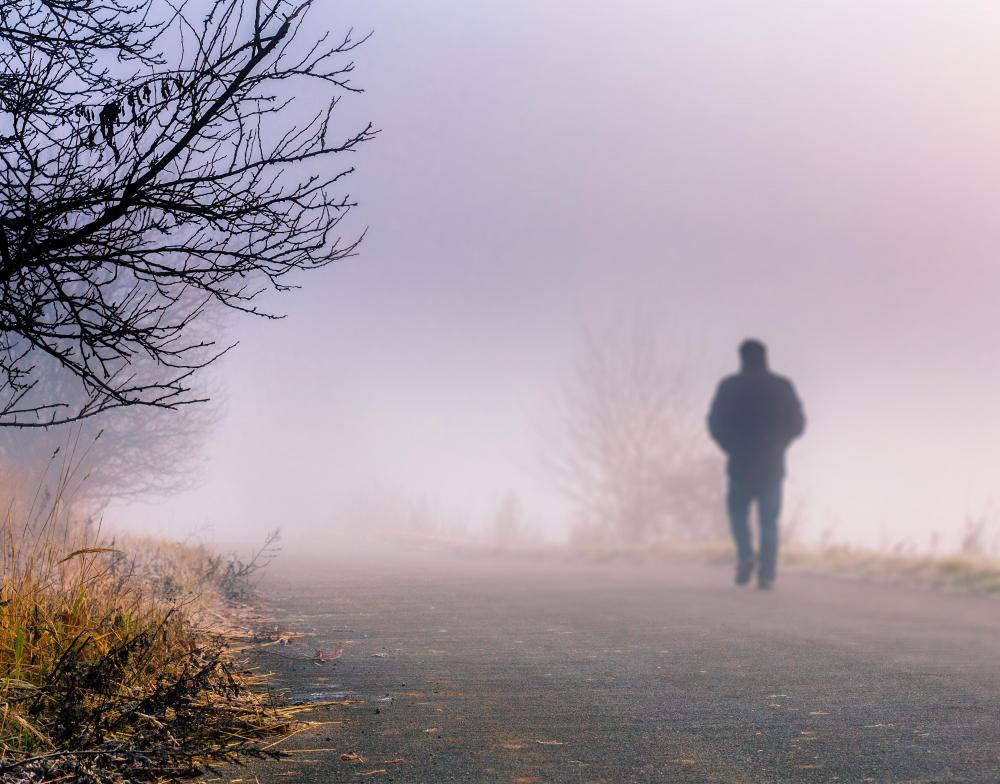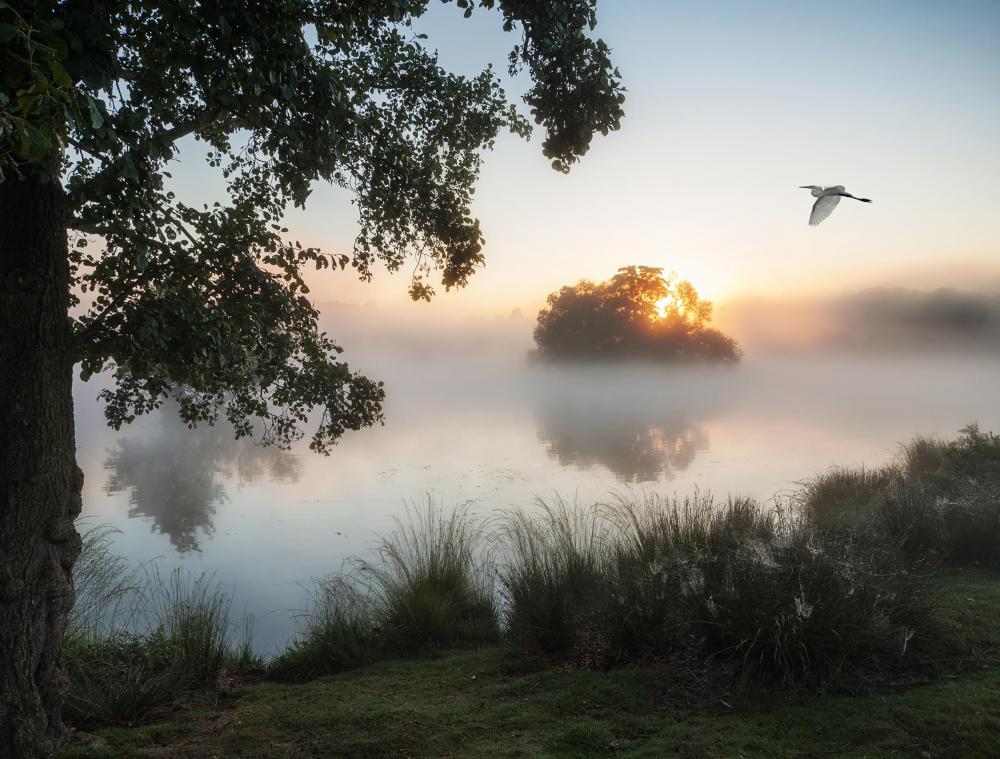What Causes Fog?
 Mary McMahon
Mary McMahon
Fog is a meteorological phenomenon caused by a supersaturation of the air, so that it can no longer hold water vapor. The water vapor precipitates out into small droplets of condensation, or fog. The processes are similar to those which make clouds, although fog forms close to the ground, rather than higher up in the atmosphere. Because visibility can be limited in foggy conditions, care should be taken when driving or walking, especially since it tends to muffle and distort sound, potentially rendering people unaware of hazards.
Whenever the air reaches a point of extremely high humidity, fog occurs. Most commonly, it happens when the air rapidly cools, causing condensation to form. There are a number of types, named for the conditions which create them. Drivers who are navigating in it should use low beams or fog lights, rather than high beams, which will simply reflect from the water droplets and create glare.

Along the shores of oceans and large bodies of water, advection fog happens when moist air from the water passes over the cooler surface of the land. Frequently, warmer weather inland sucks the moist air across the land, creating a thick blanket of fog. This happens most frequently around the ocean because the salt increases the humidity, and condensation can form at a much lower humidity level around salt.

Another common type is radiation fog. This type usually occurs after dark, when the Earth radiates heat outwards. As the heat rises, it is cooled, causing saturation conditions. Radiation fog usually clings close to the ground, and disappears by mid-morning, once the day warms up enough to dissipate it. A variation on this, tule fog, is found in the Central Valley of California. Tule fog happens when cold mountain air sinks into a depression such as the valley at night. Warmer air above it presses the cold air down, causing fog to form and linger for days. This type occurs in the fall and winter, when conditions on the mountains are colder.

A rare type called ice fog can only be formed in extremely cold conditions such as those at the Arctic and Antarctic. When the ambient air temperature is substantially below the freezing point, but still humid, the water droplets which would normally form fog turn into small ice crystals instead. Ice fog can be dangerous to drive in, as the crystals cling to windshields and headlights.
AS FEATURED ON:
AS FEATURED ON:














Discussion Comments
Interesting. This will help me in my research in school now.
in addition to other causes light wind of 3-6 miles per hour is a must.
Radiation fog forms only on calm, clear and cool nights. If it is windy the air will be mixed up and prevent fog from forming.
Similarly if it is cloudy, fog will not form, because the clouds in effect blanket the earth, preventing the heat from escaping.
Post your comments